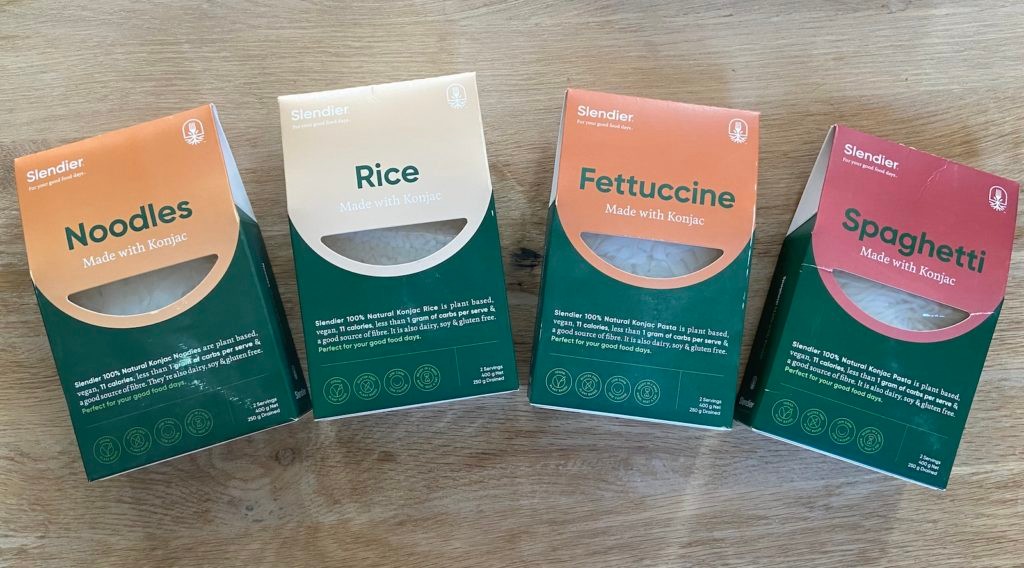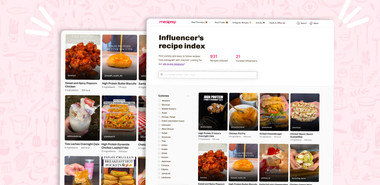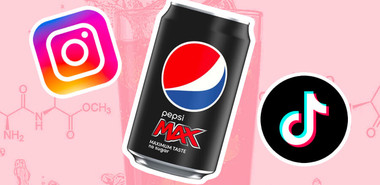Curious about Konjac noodles? These low-calorie, low-FODMAP noodles are gaining popularity in Australia for their perceived health benefits. But are Konjac noodles safe and healthy? In this article, I’ll explore the calories, nutrition, and potential side effects of konjac noodles, helping you decide if they’re the right fit for your diet.
- Konjac noodles are made from konjac yam grown in parts of Asia.
- Konjac noodles are virtually zero calories, contain very little carbs, are keto-friendly, gluten-free and vegan.
- Konjac noodles can be helpful for your weight loss goals and suppressing your appetite, however, they contain very little nutrients so shouldn’t be a main feature of your diet.
- Health benefits of konjac are associated with the glucomannan fibre content with most studies assess the benefits of supplements, not konjac noodles.
Konjac Noodles vs Rice Noodles 🍜
| Konjac Noodles | Rice Noodles | |
|---|---|---|
| Ingredients | Water, konjac root corm (up to 5%), sometimes preservatives like Calcium Hydroxide | Over 80% rice flour, water, sometimes corn starch and preservatives like Calcium Hydroxide |
| Calories (per 100g) | 35 kJ (8 kcal) | 1505 kJ (359 kcal) |
| Macronutrients | Low in fat and protein, can cause digestive upset in some individuals, particularly FODMAP-sensitive | Virtually no fat or protein, slightly more protein (1.6g) than konjac |
| Dietary Fibre | High in soluble dietary fibre (approx. 4g), contains glucomannan | Lower than konjac noodles |
| Micronutrients | Mostly void, small amount of calcium | Contains small quantities of iron, magnesium, calcium, and sodium |
| Gluten-Free and Vegan-Friendly | Yes | Yes |
| Preservative | Sometimes contains Calcium Hydroxide | Sometimes contains Calcium Hydroxide |
Where to Buy Konjac Noodles in Australia 🛒

Most leading supermarkets will stock at least one brand of Konjac noodles. Here are some places to buy Konjac noodles.
- Coles
- Woolworths
- Asian Grocer
- Health Food Store
- Amazon
Best Brand of Konjac Noodles
Chang’s and Slendier are the most commonly stocked brands of konjac noodles. Slendier also has a collection of pasta and rice products in their konjac range all containing just purified water and konjac flour. The flavour is the same, it’s just the form that’s different.
Are Konjac Noodles Keto-Friendly?
A standard 83g serve of Konjac noodles contains just 2g of carbohydrates and can easily fit into even the strictest of keto carb limits of 20g per day.
As the carbohydrate content is virtually non-existent, konjac noodles are keto-friendly.
If you are eating a low-carb diet, you’ll have to watch the additional ingredients such as sauces, sweeteners and starchy vegetables don’t take you over your carb limit.
Keto-dieters should also watch for the addition of soy products, such as tofu, in pre-made konjac meals as soy is not a keto-approved ingredient.
Simple Konjac Noodle Recipes for Busy People 🍽️
One of the benefits of konjac noodles and rice is how quick and easy they are to prepare. If you’re looking for a simple mid-week recipe or a meal for on the go, take a look at these recipes.
Konjac Noodle Salad
Ingredients
- 1 packet of konjac noodles
- 2-3 cups of Asian salad mix
- 1-1.5 cups of cooked chicken, shredded
- Fresh mint, roughly chopped
- 1 tsp lime juice
- 1 tbsp fish sauce
- 1 tbsp rice vinegar
- 1 tsp garlic
- 1 tsp honey
- Fresh chilli sliced, optional
Method
- Rince the konjac noodles and allow them to drain well.
- In a small bowl, mix the lime juice, fish sauce, rice vinegar, garlic, honey and fresh chilli, if using.
- In two bowls, arrange the noodles, salad mix and chicken. Drizzle over the dressing and garnish with mint.
Stirfry Konjac Rice with Prawns
Ingredients
- 1 Packet of konjac rice
- 2 cups of raw prawns, shelled
- 2 spring onions, finely diced
- 3 garlic cloves, diced
- 1 tsp of grated ginger
- 2 cups of greens of choice (I use broccolini, choy sum and wombok)
- 2 Tbsp soy sauce more to taste
- 2 Tbsp oyster sauce more to taste
- 1 tsp sriracha chilli sauce optional
- 1 tsp coconut oil
Method
- Rinse and drain the konjac rice.
- Heat a large pan over medium heat. Add the rice and fry for a couple of minutes. Remove and set aside.
- Add the coconut oil and fry the whites of the spring onion, garlic and ginger for 1-2 minutes.
- Add the greens and stir fry for 2-3 minutes. If needed, add a dash of water to help steam.
- Add the prawns. Cook the prawns until pink.
- Pour in the sauces. Taste and adjust if needed.
- Stir in the konjac rice and garnish with the green tops of the spring onions.
Konjac Noodle Broth
Ingredients
- 1 packet of konjac noodles
- 2 cups of chicken or vegetable broth
- 2x garlic cloves, minced
- 1/4 tsp ginger, grated
- 1 tbsp tamari
- 2 spring onions, finely sliced
- 4 bok choy leaves, finely sliced
- 1 chicken breast or flank steak, thinly sliced.
- Handful of coriander
Method
- Rinse and drain konjac noodles as per the instructions.
- In a pot, add the broth garlic, ginger and tamari. Bring to the boil.
- Allow to simmer for approximately 15 minutes before adding the bok choy leaves and spring onions.
- Add the chicken or steak and simmer for a few minutes or until cooked.
- Remove from the heat and stir through the konjac noodles before serving them into bowls and topping with coriander.
Are Konjac Noodles Safe/Have Side Effects? 🤔
Konjac noodles contain glucomannan which is a viscous type of soluble fibre. This form of fibre ferments into short-chain fatty acids which have a diverse range of health benefits.
But as with many high fibre products, mild digestive issues can be a result such as:
- Abdominal pain
- Bloating
- Nausea
- Flatulence
- Diarrhoea
It’s important not to overeat konjac products and when you do try them out, start slowly increasing your portion over time. This is especially important if you suffer from digestive upset such as irritable bowel syndrome (IBS) or are not used to consuming dietary fibre regularly.
Why Were Konjac Noodles Banned in Australia in the Past? 😳
In Australia, konjac root supplements were banned in 1986. This was due to the increased risk of choking as konjac absorbs water and doesn’t dissolve readily, and the potential for obstruction of the abdomen.
In 2002, jelly cups containing konjac were temporarily banned due to the increased risk of choking, particularly for children. Later, the Australian Government applied a permanent ban on any mini-cup jelly confectionery products containing konjac.
Konjac noodles, pasta and rice are now permitted to be sold throughout Australia.
Are the ‘Miracle Noodles’ Too Good to Be True? 🙏🏻
Dubbed the ‘miracle noodles’ due to their zero calorie and low carbohydrate content, as well as their ability to help suppress your appetite, konjac noodles may seem too good to be true.
As a nutritionist, I’m always on the lookout for whole food products that can help support people’s health goals and make healthy eating more enjoyable. Konjac noodles may be a good addition to your balanced diet with some considerations.
Here are a few of my thoughts on Konjac products:
- Konjac noodles are gluten-free, vegan, low-carb and keto-friendly but they don’t contain any nutrients other than fibre so you want to make sure what you pair them with is nutritionally dense.
- They are quick and easy to prepare which is great for those with limited skills or time to cook. They simply need to be drained and rinsed under warm running water.
- It’s great that most of the konjac products only contain konjac and water, but be mindful of the additional ingredients used in pre-made konjac meals.
- If you experience digestive upset, it’s likely due to Konjac’s high fibre content. If you’re not on a low FODMAP diet, introduce these slowly and enjoy a small portion as your digestive system adapts to more fibre.
People consume Konjac noodles purely as a way to reduce their calorie intake and fill them up. Some even use the strategy of adding them into their smoothies to prevent hunger (I don’t recommend this!) But remember, Konjac noodles provide nothing but fibre and I would argue, that the taste and texture aren’t overly pleasant!
Konjac Noodle Cooking Tips 👩🏻🍳
Konjac noodles, rice and pasta generally come packed in liquid and they can get very gelatinous and gluggy. Some people note the texture can be a bit rubbery.
So there are a few tips I recommend to avoid being put off by the texture:
- Don’t be put off by the fishy smell, this dissipates once rinsed.
- Allow them to dry well before adding to the dish otherwise, they can be a bit wet.
- You can stir-fry the konjac rice or noodles before putting them into a hot, dry pan (no oil). Then add them to your dish at the last minute.
- If you find the noodles rubbery, boil them for 2-3 minutes before adding them to your dish.
- Konjac noodles absorb a lot of liquid, so you may like to add additional sauce or seasoning.
- I prefer them in Asian-inspired dishes rather than as a pasta replacement. They don’t hold a bolognese sauce, for example, as well as traditional pasta. If you’re looking for a healthier alternative to wheat pasta, I would always suggest lentil or buckwheat pasta as a substitute.
- Konjac noodles, konjac rice or konjac pasta can’t be frozen.
Konjac Noodles FAQs
Is konjac good or bad for you?
Are konjac noodles legal in Australia?
Yes, konjac noodles are legal in Australia. They are widely available in various supermarkets and health food stores.
Why do you have to rinse konjac noodles?
Rinsing konjac noodles is recommended to remove the liquid they are packaged in, which often has a fishy or unpleasant smell. This liquid is natural and harmless, but it can affect the taste and smell of the noodles. Rinsing them under cold water not only removes this odour but also improves their texture, making them more similar to traditional noodles. Some people also find that briefly boiling the noodles after rinsing can further enhance their texture.



